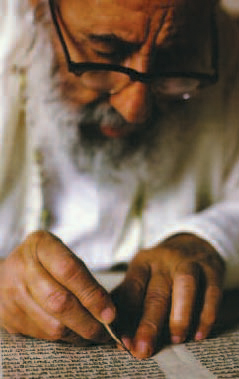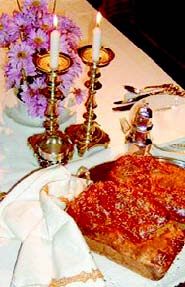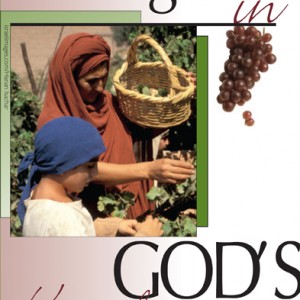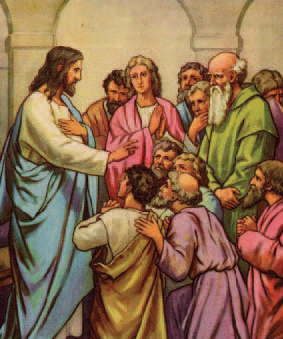×


We have detected your country as:
Please click here to go to the USA website or select another country from the dropdown list.

{image_1}
In the seventeen years I have lived in Israel, I have been blessed to learn many things which have given me fresh insight on the Scriptures. Some say that my husband and I, and the staff of Bridges for Peace, have given our lives to the Lord’s call to Israel. That is true, but what is also true is that Israel has given us new life as well. Christians who visit Israel invariably remark about how their Bible reading has come to life after a trip to Israel. In this Israel Teaching Letter, I want to share a few things that I have learned.
Continue Reading »• “Lebanon” means “the white one,” probably referring to the snow-capped peaks of the Lebanon Mountains.
• The Hittite word for cypress or juniper is close to the Hittite name for the Lebanon Mountains, so “Lebanon” could refer to the trees of Lebanon.
• It is mentioned 71 times in the Old Testament.
Continue Reading »
{image_1}Perhaps this title intrigued you, but you aren’t sure why. After all, isn’t Torah (Gen.–Deut.) really something Jewish? And, isn’t the Talmud a set of writings by Jewish rabbis collected two hundred years after Yeshua (Jesus) lived? And if so, why would a Bible-believing Christian care about the insights and comments from Jewish rabbis, scholars, and sages? You may be worried that your Christian friends might think it strange if you began studying Jewish writings, or your Jewish friends might be offended if they learned you were studying “their stuff.” Let me suggest four reasons why the study of Torah and Talmud can be valuable for Bible-believing Christians.
Continue Reading »
{image_1}Every Friday night, I enjoy a Shabbat (Sabbath) meal with Jewish friends in my neighbourhood. It is the highlight of my week.
|
The Elements of a Shabbat Meal |
|
{image_2} Wine symbolizing Joy |
|
{image_3} Challa (braided bread) symbolizing the double provision of manna |
|
{image_4} The lighting of the candles to remember and observe the Sabbath |
When I first experienced a Shabbat meal, while in America, I learned about the symbolism of each part of the meal: the two candles, symbolic of the commands to both remember (Exod. 20:8) and observe (Deut. 5:12) the Shabbat; the wine, the joy of Shabbat; the two loaves of challah (Shabbat braided bread) reminded Jews of God’s double provision of manna in the wilderness on Shabbat (Exod.16:22); the table, a picture of the Temple’s altar; and the father officiating as the priest of the home.
Continue Reading »
{image_1}Everyone loves a great story! Although we often think of storytelling in terms of its educational and entertainment value for children, the ability to tell and to comprehend a good yarn has served teachers and parents, pastors and preachers, psychiatrists and bartenders very well throughout the ages.
Continue Reading »
{image_1}
Throughout the Bible, God uses simple, everyday illustrations to communicate spiritual truth. Frequently these illustrations are taken from the agrarian lifestyle common in biblical times. These teachings were meant to bring clarity and insight to the readers in an easy-to-understand manner. Unfortunately, we live 2,000 years after the events of the Bible, and most of us are not involved in growing our own food. Even if we are farmers, the methods have changed dramatically over the centuries. We read Scripture through our own cultural eyeglasses, and often miss truths because we simply don’t understand the illustrations.
Continue Reading »
{image_1}
Webster’s Dictionary defines a disciple as “one who believes the teachings of a master.” Further, Mr. Webster states, the disciple may help to “disseminate those teachings.” The primary thrust of this definition that is commonly held in most circles today, including the Church, is that discipleship requires little more than intellectual assent. So it seems that to be a disciple of Yeshua (Jesus), all I have to do is believe what He said.
Continue Reading »Mllions of people think of Psalm 23 as the gentle comfort of the loving Shepherd embodied in words. It’s true. It is a picture of comfort that has lived down through the ages. I like to look at familiar Scriptures and see if there is anything that I missed on the first reading. Recently, when I read Psalm 23, I began to see some additional insights.
Continue Reading »
The history of immersion has been submerged in muddy waters. One matter is certain: baptism means immersion, and immersion was the original way to baptize. Whether there were other ways to satisfy the mode of immersion, and whether the subject should be a babe or a believer are matters of historical and contemporary debate. A consensus on origins would be nice, but one does not appear forthcoming. Gordon Lathrop noted: “Behind the word-service stands the synagogue; behind the Christian meal stand the meal-patterns of hellenistic Judaism. There is no such consensus about the origins of Christian baptism” (Lathrop, 505).
Continue Reading »
{image_1}
Editor's note:
At our annual Bridges for Peace International Representative Institute, one of our speakers, Moshe Kempinski, who is a religious and faithful Jew, shared his heart with our Christian audience. Moshe and his brother own the Shorashim gift shop and bookstore in the Jewish Quarter of the Old City of Jerusalem and are in constant communication with Christians in an effort to create better understanding between Christians and Jews. There are certain assumptions we Christians make when communicating with Jewish people, which do more to close doors than open them.
All logos and trademarks in this site are property of their respective owner. All other materials are property of Bridges for Peace. Copyright © 2024.
Website Site Design by J-Town Internet Services Ltd. - Based in Jerusalem and Serving the World.